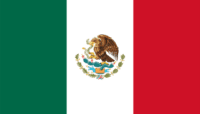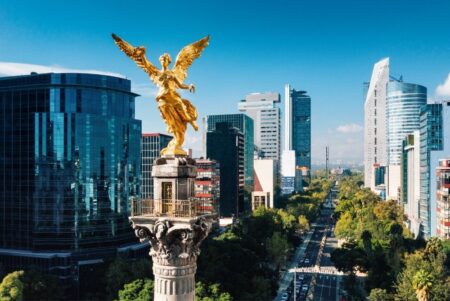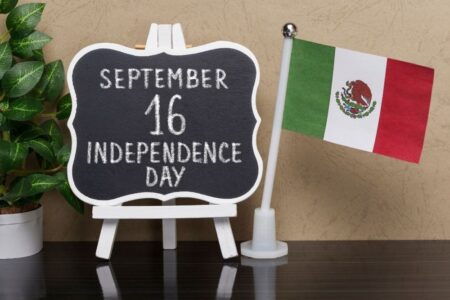Trivia Pills: 10 interesting facts about Mexico
These small snippets are extracted from longer posts on Mexico. Be sure to check out the Mexico page for more information and articles.

history
#1 – Land of pyramids

With over 60 ancient structures, Mexico has more pyramids than Egypt. It is also home to the largest pyramid in the world, the Great Pyramid of Cholula, built by the Toltec civilization for the god Quetzalcoatl.
It is the largest monument ever constructed in the world, shorter than the Pyramid of Giza but much wider and with a higher volume.
history
#2 – CMDX is sinking

Mexico City is the oldest city in North America, built on top of the ruins of the Aztec Tenochtitlán.
It is built over a lake, and since the arrival of the Conquistadores, the lakebed has been drained, and the city is sinking by around 12cm per year.
society
#3 – The country with the richest language diversity
Spanish is not the only national language in Mexico. In fact, there are 68 other indigenous languages, including Náhuatl, Maya, Mixteco, and Otomí, which are recognized as national languages.
Náhuatl for example, was the language used by the Aztecs during the 14th century and is spoken to this day by around 1.4 million people in Mexico.
When it comes to Spanish though, there are over 67 million people in Mexico who speak Spanish, making up half of the world’s Spanish-speaking population.
history
#4 – The mass dinosaur extinction originated in Mexico

The meteorite that wiped out the dinosaurs 65 million years ago hit the Mexican peninsula of Yucatán near the coast of Chicxulub.
The Chicxulub crater is a 180-square-meter crater with a depth of more than 600 m and was discovered in 1981 during excavations searching for petroleum.
history
#5 – The mighty capital

Built over the ruins of the Aztec capital Tenochtitlán, Mexico City was officially named Distrito Federal until as recently as 2016, when it officially changed its name to CDMX – Ciudad de Mexico.
It is one of the largest and most populous cities in the world; it has the second largest subway system (after Tokyo); and it is the second city with more museums in the world.
history
#6 – Mexico Independence Day is not Cinco de Mayo

Cinco de Mayo is celebrated a lot by Mexican immigrants in the US, but it is not Mexico Independence Day; instead, it is the commemoration of the Battle of Puebla of 1862.
Mexican Independence Day is celebrated on Sept. 16th and commemorates the year 1810 when the Roman Catholic priest Miguel Hidalgo y Costilla gave his famous “Grito de Dolores” or “Cry of Dolores” speech on the steps of the town’s church and declared Mexico’s independence from Spain.
society
#7 – Home of chocolate
Mexicans eat on average 70 pounds of chocolate every year, more than any other country in the world. The culture of chocolate dates back hundreds of years, with the Aztecs making “chocolatl” bitter drinks.
Mexican chocolate was introduced to Europe by Hernan Cortez upon his return and quickly became more popular than the European chocolate of the time because of its unique bitter and spicy flavor.
country
#8 – The second-largest coral reef in the world
A little-known fact is that the Mesoamerican Reef, which encompasses around 600 miles of coastline from Cancun down to Belize, is the second-largest coral reef in the world.
The Riviera Maya in Mexico and cayes in Belize are some of the best diving sites in the world
history
#9 – The origins of the name
Mexico comes from “Mexica,” a powerful tribe that first established a settlement at Tenochtitlan in 1325 AD. As with many other tribes, alliances were soon formed with other people in the area around Lake Texcoco. These mergers of people later became the Aztec empire.
history
#10 – The Mexican flag

The modern-day Mexican flag originated in 1968. Red, white, and green are the colors of the national army of Mexico, with green symbolizing hope, white standing for purity, and red representing the blood that was shed to achieve independence.
The central emblem is the Mexican coat of arms and is based on the Aztec symbol of their imperial capital, Tenochtitlan. It depicts an eagle sitting on a cactus while devouring a serpent and indicates to the Aztecs that they (the eagle coming from the sun) had found the site (the cactus) where they found their city. In later Roman Catholic interpretations, the eagle represents all that is good, while the snake represents evil and sin.
country
Bonus – The eternally young Axolotl

The axolotl is a highly endangered species living in the lakes under Mexico City. Studies have shown that it has incredible regenerative properties, presumably because of its neoteny properties (meaning it remains juvenile even in adulthood).
The name means “water dog” in Nahuatl and comes from Xolotl, the dog-headed god of fire and lightning but also the god of monstrosities, sickness, deformities, and misfortune (and twins). According to legend, Xolotl transformed into an axolotl to avoid being sacrificed by fellow gods.




